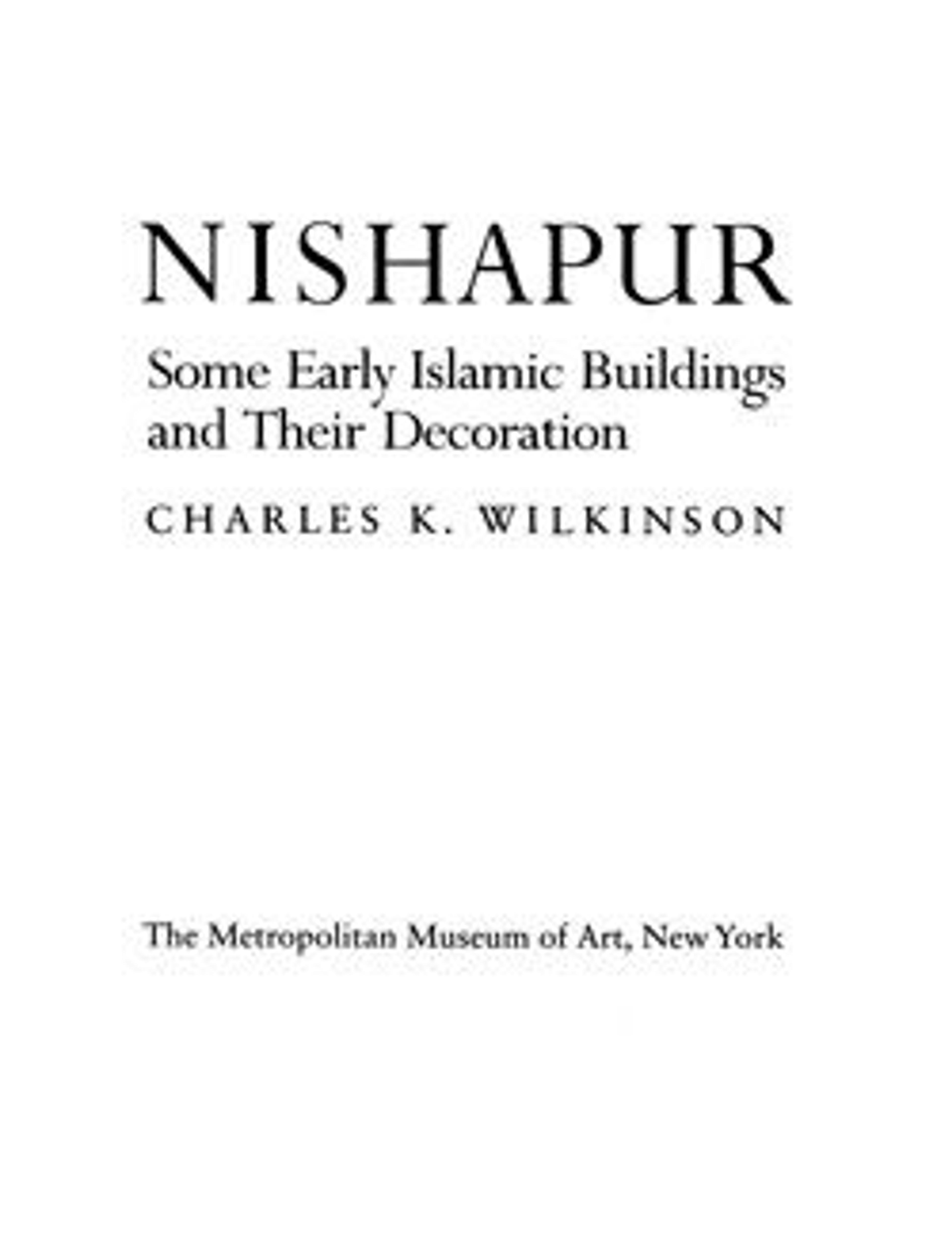Shoulder of a Figure with Blue Drapery
Colored with blue, yellow, black and traces of red, this fragment from a wall painting was excavated from the mound at Nishapur known as Sabz Pushan (the Green Covered). The excavations at Sabz Pushan revealed part of a residential neighborhood dating to the tenth century. This and several similar fragments were found deposited in the bottom of a well dug into the floor of what was likely a domestic unit after having been chipped off a wall and discarded, so their original location is not known. Several are now housed in the Metropolitan Museum, and include 38.40.267, 38.40.268, 38.40.270, 38.40.271.
While we can only guess at the scene or scenes to which these fragments of painting belonged, it is clear that the subject matter was figural. Several of the fragments contain parts of human heads and this piece shows what may be the draped shoulder of a lute player. The body of the lute appears in the lower right-hand corner of the fragment and the shoulder in blue just above. If this interpretation is correct, the scene to which this piece belonged may have depicted a musical session. The related theme of merriment appears elsewhere in Nishapur’s material culture, including the vibrantly painted ceramics that show scenes of drinking and feasting (40.170.14).
While we can only guess at the scene or scenes to which these fragments of painting belonged, it is clear that the subject matter was figural. Several of the fragments contain parts of human heads and this piece shows what may be the draped shoulder of a lute player. The body of the lute appears in the lower right-hand corner of the fragment and the shoulder in blue just above. If this interpretation is correct, the scene to which this piece belonged may have depicted a musical session. The related theme of merriment appears elsewhere in Nishapur’s material culture, including the vibrantly painted ceramics that show scenes of drinking and feasting (40.170.14).
Artwork Details
- Title:Shoulder of a Figure with Blue Drapery
- Date:9th–10th century
- Geography:Excavated in Iran, Nishapur
- Medium:Stucco; painted
- Dimensions:Obj without setting: H. 6 5/8 in. (16.8 cm)
W. 9 13/16 in. (24.9 cm)
Object with setting: H. 7 1/8 in. (18.1 cm)
W. 10 3/4 in. (27.3 cm)
D. 1 1/16 in. (2.7 cm)
- Classification:Stucco
- Credit Line:Rogers Fund, 1938
- Object Number:38.40.269
- Curatorial Department: Islamic Art
More Artwork
Research Resources
The Met provides unparalleled resources for research and welcomes an international community of students and scholars. The Met's Open Access API is where creators and researchers can connect to the The Met collection. Open Access data and public domain images are available for unrestricted commercial and noncommercial use without permission or fee.
To request images under copyright and other restrictions, please use this Image Request form.
Feedback
We continue to research and examine historical and cultural context for objects in The Met collection. If you have comments or questions about this object record, please contact us using the form below. The Museum looks forward to receiving your comments.
